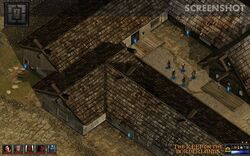A typical game development workflow when working with C++ is something like this:
1. Design and write code in IDE (IDE being basically a glorified text editor)
2. Compile code (compilation turns the source code into machine executable sequence of instructions)
3. Run the game and wait for it to load
4. Test your changes (play the game to the spot where you have made your changes or load a saved game if you’re lucky and the save game is still compatible with your code changes)
5. Go back to step 1
Steps 1 through 5 is usually collectively called the “iteration loop”. Essentially step 1 is where all the innovation and fun happens, everything else is just lost time. The length of the iteration loop is usually somewhere between 30 secs to a couple of minutes (if it’s longer than that you’re pretty much screwed). On consoles and mobile devices the iteration loop is usually even longer because the code and/or data has to be transmitted to the device for testing.
In game development, especially when tuning game play, the code changes you make in step 1 are often very quick to make and development speed can become bottlenecked by redundant steps 2-5. There are two factors in this. First, the actual time lost to waiting due to compilation, waiting for the game to start up and getting the game state to where you want it to be in order to test the new feature. Second, and this is far more important in my opinion, with a long iteration loop your mind easily wanders off and you lose the trail of thought. For example, if you have to wait for a minute for the code to compile, there’s a pretty good chance that you check your mails, open a browser to check the news and suddenly you’re thinking about your girlfriend, wife, dog, whatever . And it’s this context switch that really hurts because getting back into the flow of programming needs considerable amount of time.














